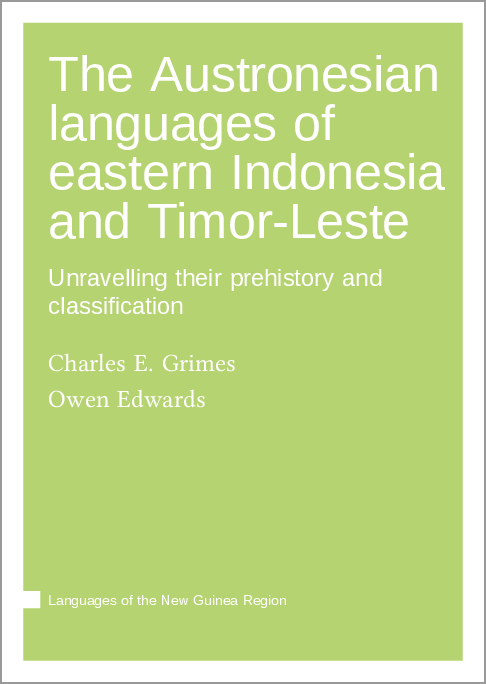We log anonymous usage statistics. Please read the privacy information for details.
Forthcoming: The Austronesian languages of eastern Indonesia and Timor-Leste: Unravelling their prehistory and classification
Synopsis
For 150 years there has been a question over how the Austronesian languages of eastern Indonesia and Timor-Leste fit into the Austronesian world. The area is severely under-documented. There has been no consensus on the classification of these languages, and scholars admit to being perplexed. This is the first systematic attempt at subgrouping the whole region based on historical phonology, supplemented by morphosyntax and the lexicon. Insights from archaeology, DNA studies, and awareness of long-term contact with Papuan languages inform this study.
Nine Wallacean subgroups are identified, along with their internal structures. Light is shed on languages whose classification has been unclear. Discontinuities in the historical phonology suggest different groups speaking different Austronesian languages got off different boats at different places, probably at different times. No evidence is found supporting a monolithic Austronesian advance through the region, nor a common Austronesian parent language below PMP that links all Wallacean subgroups.
Speakers of SVO Austronesian languages with prepositions, preverbal negation, numbers before nouns, and post-posed possessors came into contact with speakers of languages of unrelated Papuan families, with postpositions, clause-final negation, numbers following nouns, preposed possessors, and other features of SOV languages. Austronesian languages adopted these features but not uniformly, such that features attributed to contact are uneven across the region. Some are not found in some subgroups or branches within subgroups. Distribution maps of phonological, grammatical, and lexical features show many features are not found in all subgroups, do not align with each other, and some are found outside the region. Austronesian languages in the region are a kind of uneven hybrid that make them typologically different from Austronesian languages to the west and north.
The study evaluates earlier proposals along with new possibilities to link subgroups in different ways, but finds no features or sound changes that are exclusively shared innovations inherited from a common parent. Scenarios are explored of how Austronesian-speaking peoples came into the region. The uneven distribution of various features is addressed. Implications are many, and warrant a revised picture of the Austronesian world.
Several factors enabled this more in-depth study than has been previously possible. Both authors have extensive experience in the region. Many Dutch-era sources have become accessible online. Recent publications and unpublished data have been shared by others. This enabled the authors to glean data from 517 Austronesian and Papuan languages from within the region as well as to the west and east of it, providing context. Within the region, data have been gleaned from 292 varieties (256 Austronesian, 36 Papuan), some of which are now extinct. The volume is data rich with 334 data tables, 77 figures (including 32 maps), and 236 numbered examples/lists of data.



